When we listen to music or songs, although we are not aware of it, many things are happening at the same time. One of the most important aspects is rhythm, that kind of musical beat, that which moves our feet and shakes our bodies. And to organize or try to explain this phenomenon of nature, musical theory defined the concept of compass.
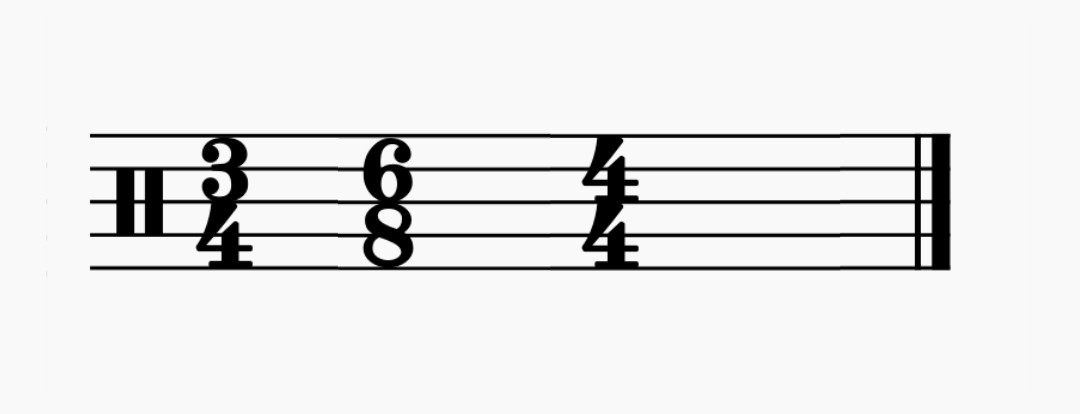 Three types of measures Let's see a little what it is about.
Three types of measures Let's see a little what it is about.
The rhythm and the beats
To begin, perhaps it will be useful to briefly talk about musical rhythm. Our personal relationship with time, with the duration of things and with our perception of all this is quite complex, but when it comes to music it seems that everything is simpler. There is something innate about this whole thing. Perhaps because in our mothers' wombs we already hear the regular beat of their hearts, or because of the recurring sway of their steps. The fact is that we are born with the ability to recognize those patterns, those recurring pulses that are the basis of rhythm, in general, and of rhythmic combinations in music. And, within the enormous variety of rhythms that we can hear around the world, we can identify a pulsation In all of them, something implicit, more or less evident, that sustains any rhythmic combination. And that pulse, furthermore, usually meets with others in repetitive blocks as well, in which some are perceived as stronger than others. We call those prominent or stronger pulses accents. This set of ideas and their possible combinations give rise to what we know as metrics musical and one of its most important elements are the beats.
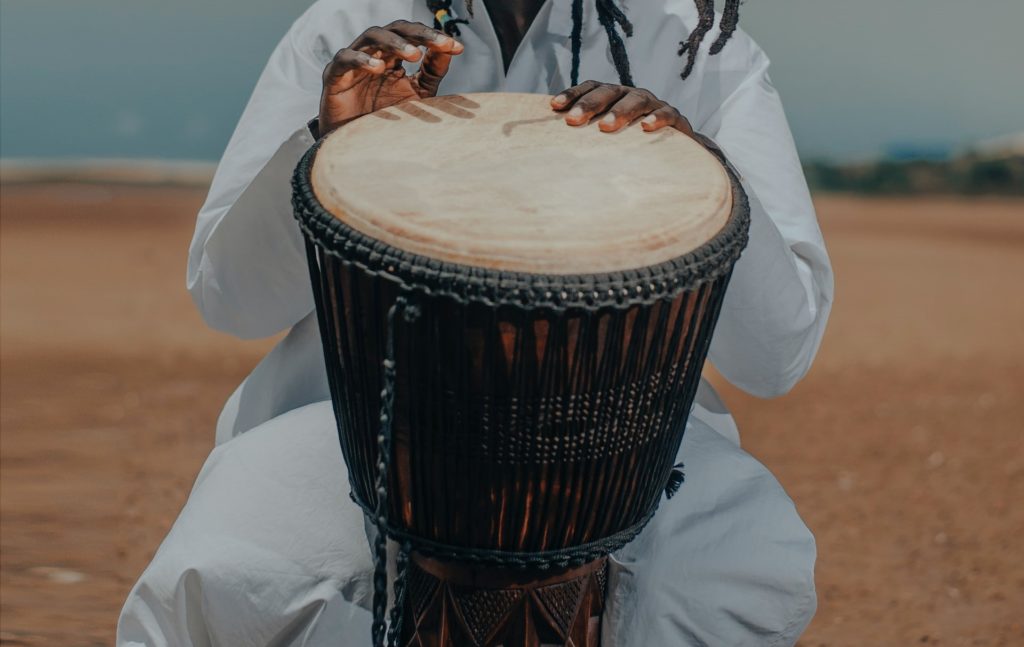 Compass, rhythm, drum
Compass, rhythm, drum
What is a musical beat?
So, a compass Musical is a group of pulses accented in a certain way that repeat over time. Otherwise, based on a reference musical figure, a specific number of these figures will complete the measure, with the first of them accented if there are no other indications.
Representation of the measures
When writing on a score or communicating with other musicians, we will use certain terminology to talk about this matter. When we see a time signature, what we will find will be things like 4/4, 3/4, 4, 6/8, 12/8, etc… If we look closely, although the numbers change, the structure of what is represented it doesn't. We always find a number above or in front and another number below or behind. Very good. And what do these numbers mean? We call the first number, or the upper one, numerator and determine how many musical figures appear in each measure of that type. And the second number, or the lower one, is called denominator and it tells us what base musical figure we are talking about. A 1 = quarter note (four beats) A 2 = half note (two beats) A 4 = quarter note (one beat) A 8 = eighth note (half a beat) A 12 = sixteenth note (a quarter of a beat) For example, what we know as compass of 4/4, means that each measure will consist of four quarter notes or four beats. The first 4 of the formula or representation, the numerator, indicates that that measure consists of four figures, and the second 4, the denominator, indicates that those four figures in that measure are quarter notes, also known as a beat.
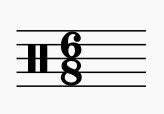 Representation of the 6/8 time signature
Representation of the 6/8 time signature
Simple and compound measures
The first classification that we must take into account about the measures is that each beat or pulse of the measures can also be perceived, in turn, with smaller pulses or subdivisions. Then: A simple compass It will be the one whose reference figures can be subdivided into halves. For example, a 2/4 or a 3/4. and a compound time signature one whose base figures are subdivided into thirds. For example, a 6/8 or a 9/8.
Types of time signatures
This may sound a little confusing. Let's explain it better and see a few types of time signatures.
Binary measures
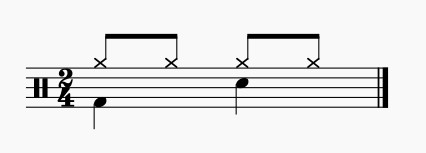 2/4 time signature 2/4 indicates a two-beat measure that can be divided into halves during performance.The 6/8 indicates a time signature of six eighth notes that can be subdivided into two groups of three each. A binary compass with ternary subdivisions.
2/4 time signature 2/4 indicates a two-beat measure that can be divided into halves during performance.The 6/8 indicates a time signature of six eighth notes that can be subdivided into two groups of three each. A binary compass with ternary subdivisions.
 6/8 time signature
6/8 time signature
Ternary measures
 3/4 time signature 3/4 indicates a compass of three beats that can be divided into halves each of them. That is, a ternary compass with binary subdivisions. 9/8 indicates a measure of nine eighth notes that can be subdivided into three parts each of those three beats. This would be a ternary compass with ternary subdivisions.
3/4 time signature 3/4 indicates a compass of three beats that can be divided into halves each of them. That is, a ternary compass with binary subdivisions. 9/8 indicates a measure of nine eighth notes that can be subdivided into three parts each of those three beats. This would be a ternary compass with ternary subdivisions.
 9/8 time signature
9/8 time signature
Quaternary Compasses
 4/4 time signature 4/4 It will then indicate a time signature of four beats that can each be subdivided into halves. If we continue with academic terminology, a quaternary compass with binary subdivisions. 12/8for its part, indicates a type of time signature that lasts twelve eighth notes, that is, four beats, each of which can be subdivided into three parts.
4/4 time signature 4/4 It will then indicate a time signature of four beats that can each be subdivided into halves. If we continue with academic terminology, a quaternary compass with binary subdivisions. 12/8for its part, indicates a type of time signature that lasts twelve eighth notes, that is, four beats, each of which can be subdivided into three parts.
 12/8 time signature We can see the many combinations we have available to compose music and, in reality, we have only mentioned some of the options, the most basic and recognizable ones. If we add different accentuations to which the Western ear is accustomed or mix different measures in more complex sequences, we will have even more possibilities at our disposal. Amalgam time signatures and other types of irregular time signatures, although probably not the most used in the music we hear every day, appear here and there regularly, often as an essential characteristic of some musical styles. The flamenco styles, progressive music or many rhythms of African origin use keys and resources that, from the base, are supported by different recurrent pulsations and accents, resulting in musical pieces and songs with characteristic rhythmic sensations.
12/8 time signature We can see the many combinations we have available to compose music and, in reality, we have only mentioned some of the options, the most basic and recognizable ones. If we add different accentuations to which the Western ear is accustomed or mix different measures in more complex sequences, we will have even more possibilities at our disposal. Amalgam time signatures and other types of irregular time signatures, although probably not the most used in the music we hear every day, appear here and there regularly, often as an essential characteristic of some musical styles. The flamenco styles, progressive music or many rhythms of African origin use keys and resources that, from the base, are supported by different recurrent pulsations and accents, resulting in musical pieces and songs with characteristic rhythmic sensations.
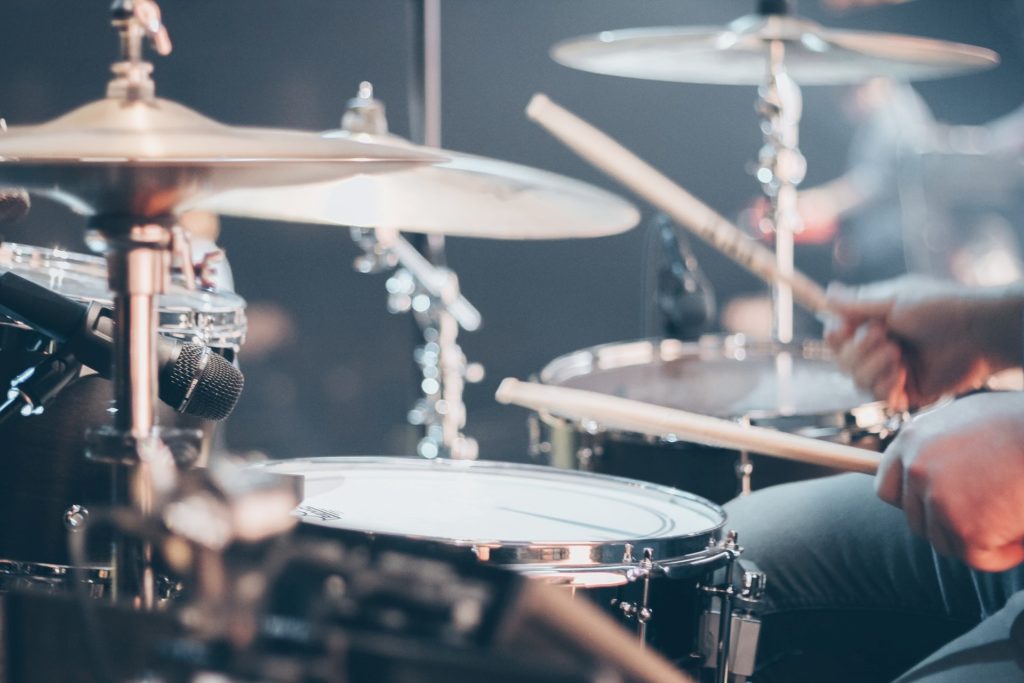 Battery
Battery
Conclusions
As you can see, being aware of the fundamentals of musical rhythm is very useful to achieve a more complete and deeper understanding of this special and powerful phenomenon that invades us and invites us to dance, to move, to express ourselves better, even. This way of understanding and representing the meter of songs and music often requires additional notations or indications to better understand how a piece should be accented and interpreted. So, for example, saying or reading the word “swing”, in a 4/4 time signature, will mean that the accented beats are no longer the first and third of each measure, but rather the second and fourth. A large part of music with African roots feels and uses this type of accentuation as something common. This article is just a summary, an introduction to the fantastic world of beats and rhythm from a music theory point of view. In short, if you like music but are also interested in or even compose songs or instrumental music, knowing and understanding the variety of musical measures will give you a richer vision of the works you hear and, probably, an added way to enjoy this miracle that we know as rhythm, as songs and as music. #mailpoet_form_3 .mailpoet_form { } #mailpoet_form_3 .mailpoet_column_with_background { padding: 10px; } #mailpoet_form_3 .mailpoet_form_column:not(:first-child) { margin-left: 20px; } #mailpoet_form_3 .mailpoet_paragraph { line-height: 20px; margin-bottom: 20px; } #mailpoet_form_3 .mailpoet_segment_label, #mailpoet_form_3 .mailpoet_text_label, #mailpoet_form_3 .mailpoet_textarea_label, #mailpoet_form_3 .mailpoet_select_label, #mailpoet_form_3 .mailpoet_radio_label, #mailpoet_form_3 .mailpoet_checkbox_label, #mailpoet_form_3 .mailpoet_list_label, #mailpoet_form_3 .mailpoet_date_label { display: block; font-weight: normal; } #mailpoet_form_3 .mailpoet_text, #mailpoet_form_3 .mailpoet_textarea, #mailpoet_form_3 .mailpoet_select, #mailpoet_form_3 .mailpoet_date_month, #mailpoet_form_3 .mailpoet_date_day, #mailpoet_form_3 .mailpoet_date_year, #mailpoet_form_3 .mailpoet_date { display: block; } #mailpoet_form_3 .mailpoet_text, #mailpoet_form_3 .mailpoet_textarea { width: 200px; } #mailpoet_form_3 .mailpoet_checkbox { } #mailpoet_form_3 .mailpoet_submit { } #mailpoet_form_3 .mailpoet_divider { } #mailpoet_form_3 .mailpoet_message { } #mailpoet_form_3 .mailpoet_form_loading { width: 30px; text-align: center; line-height: normal; } #mailpoet_form_3 .mailpoet_form_loading > span { width: 5px; height: 5px; background-color: #5b5b5b; }#mailpoet_form_3{border: 1px solid #fcb900;border-radius: 40px;text-align: center;}#mailpoet_form_3 form.mailpoet_form {padding: 20px;}#mailpoet_form_3{width: 70%;}#mailpoet_form_3 .mailpoet_message {margin : 0; padding: 0 20px;}#mailpoet_form_3 .mailpoet_paragraph.last {margin-bottom: 0} @media (max-width: 500px) {#mailpoet_form_3 {background-image: none;}} @media (min-width: 500px) { #mailpoet_form_3 .last .mailpoet_paragraph:last-child {margin-bottom: 0}} @media (max-width: 500px) {#mailpoet_form_3 .mailpoet_form_column:last-child .mailpoet_paragraph:last-child {margin-bottom: 0}} Please leave this field emptyDo you write songs or would you like to?
I have read and accept the Privacy Policy With the Guide «The journey of a song» as a gift Check your inbox or spam folder to confirm your subscription.
